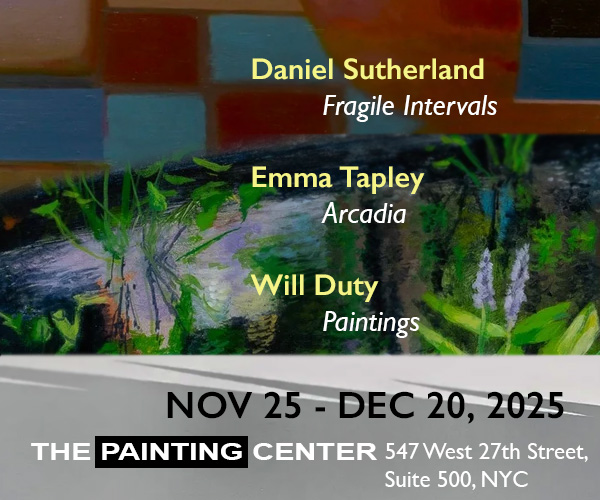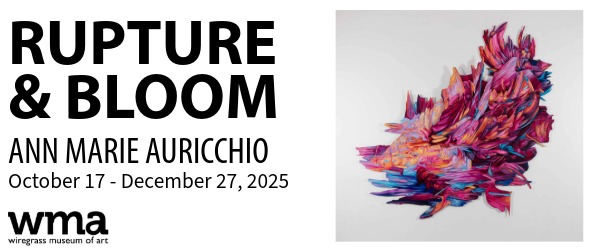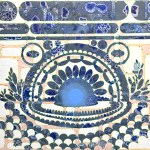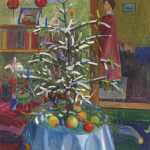
Contributed by Jonathan Stevenson / If mid-century art lovers had thought Robert Rauschenberg�s cheeky erasure of Willem de Kooning�s drawing in 1953 was irreverent, they might have revised their definition of the term twenty years later, when Hans Haacke tendered them detailed questionnaires about their backgrounds and attitudes as they entered the John Weber Gallery, which was showing his work and others�. Rauschenberg�s move may have signaled iconoclasm, but it was reasonably courteous � he asked de Kooning�s permission � and wholly interior to the art world. Haacke, by incorporating institutional critique into his work, meant to challenge complacency not just about art but, more importantly, about the world at large. The New Museum�s retrospective �Hans Haacke: All Connected,� covering four full floors and part of the lobby, affords the German-born 83-year old New York artist a sharply targeted appreciation, with deep contemporary relevance.

On the fifth floor, the curators present the two ballot boxes from Haacke�s famed Museum of Modern Art poll in 1970, in which two-thirds of the visitors to the museum answered yes to question �Would the fact that Governor Rockefeller has not denounced President Nixon’s Indochina Policy be a reason for your not voting for him in November?� Also included are 21 bar graphs and pie charts demographically profiling the Weber Gallery patrons. Haacke�s 2014 huge bronze sculpture Gift Horse� in fact, the outsize skeleton of a horse, its neck adorned with a flexible LED banner reading out stock quotes and tied in a bow � dominates the fourth floor. Appearing for the first time in New York, it�s a brilliantly realized conceptual piece that generalizes works like his painting Cowboy With Cigarette (1990), which sent up Phillip Morris�s sponsorship of a MoMA Cubism exhibit. The sculpture stands as a reminder of the inexorable linkage of art and money as well as a jarring rebuke to myopically capitalistic notions of progress.

Flanking Gift Horse is the iconic Shapolsky et al. Manhattan Real Estate Holdings, a Real Time Social System(1971) � a set of photographs and descriptions of properties held by a prominent slumlord, defiantly celebrated for the Guggenheim�s fusty refusal to show it on the ground that a museum is not a �proper platform to launch what is essentially social reform.� Times change. Hugging the floor, the installation Circulation (1969) serves as a deceptively serene warning of systemic unpredictability and, perforce, unintended consequences, building on Haacke�s earlier kinetic explorations of motion displayed on the second floor. Over twenty additional works demonstrate his singular drive to wed visual apprehension to social and historical awareness. Especially engrossing are his framed series on the checkered provenance of the Seurat painting Les Poseuses from 1888 to 1975 and, interspersing advertising copy with researched factual revelations, the efforts of British Leyland to obscure the dubious use of the Land Rovers it manufactured by the apartheid regime in South Africa in the 1970s.

Other installations, like the torn flag in State of the Union (2005) and the crass artifacts and inanely ugly tweets in Make Mar-a-Lago Great Again (2019), are less subtle but equally on target. Haacke paved the way � and set a high bar � for younger institutional critics like William Powhida. Haacke is snarky by creed, but always with the ethical aspiration of illuminating important truths and how social, political, and economic systems hide them. In �What�s the Point?,� an inspired essay published in The Paris Review in September, Michael Chabon thought through his own despair about these �dire times� of repressive falsehood and came around to the partially redemptive view that �to experience the truth in art reminds us that there is such a thing as truth.� More forensically and polemically than most, and to abiding effect, Haacke took that kind of idea to heart sixty years ago and has never let it go.

�Hans Haacke: All Connected,� curated by Gary Carrion-Murayari and Massimiliano Gioni, New Museum, 235 Bowery, New York, NY. Through January 26, 2020.
Related posts:
William Powhida�s inquisition
Art and politics: �Broad Stripes and Bright Stars� in New Haven
Art and Film: Wajda�s final word on art and politics






















